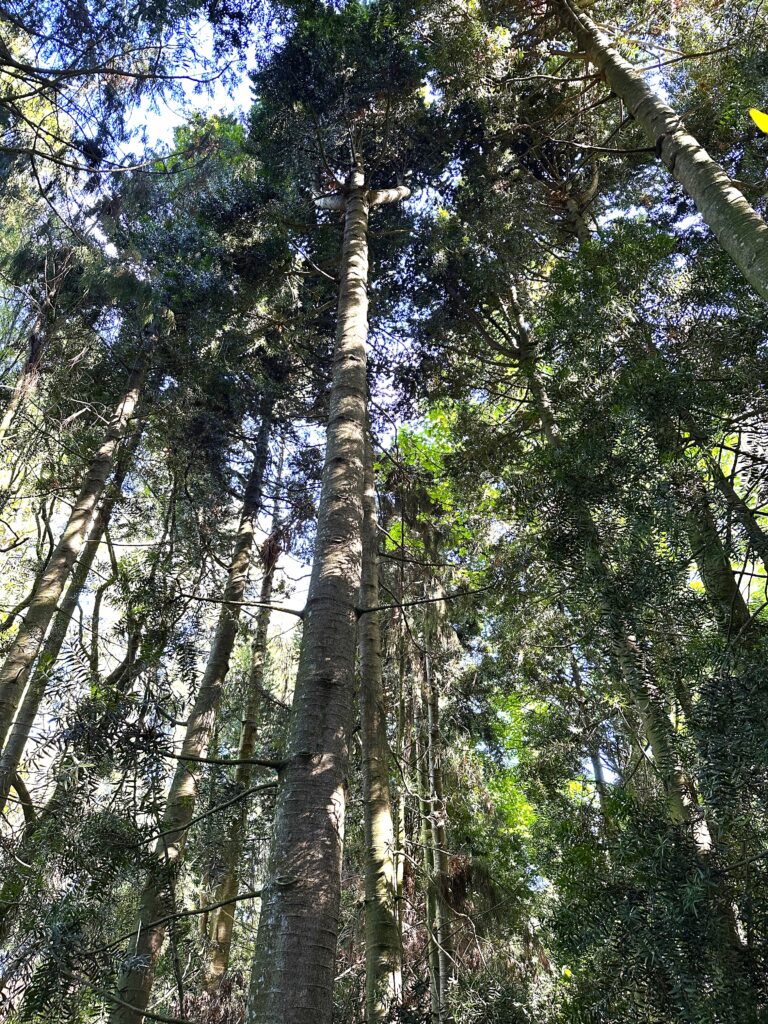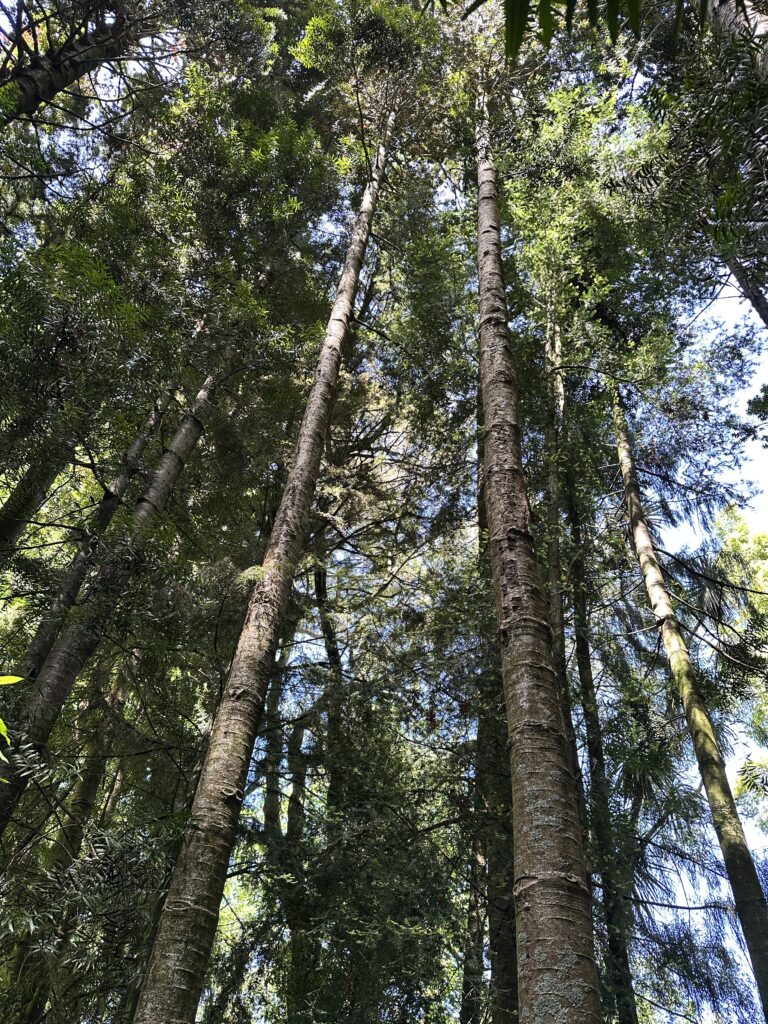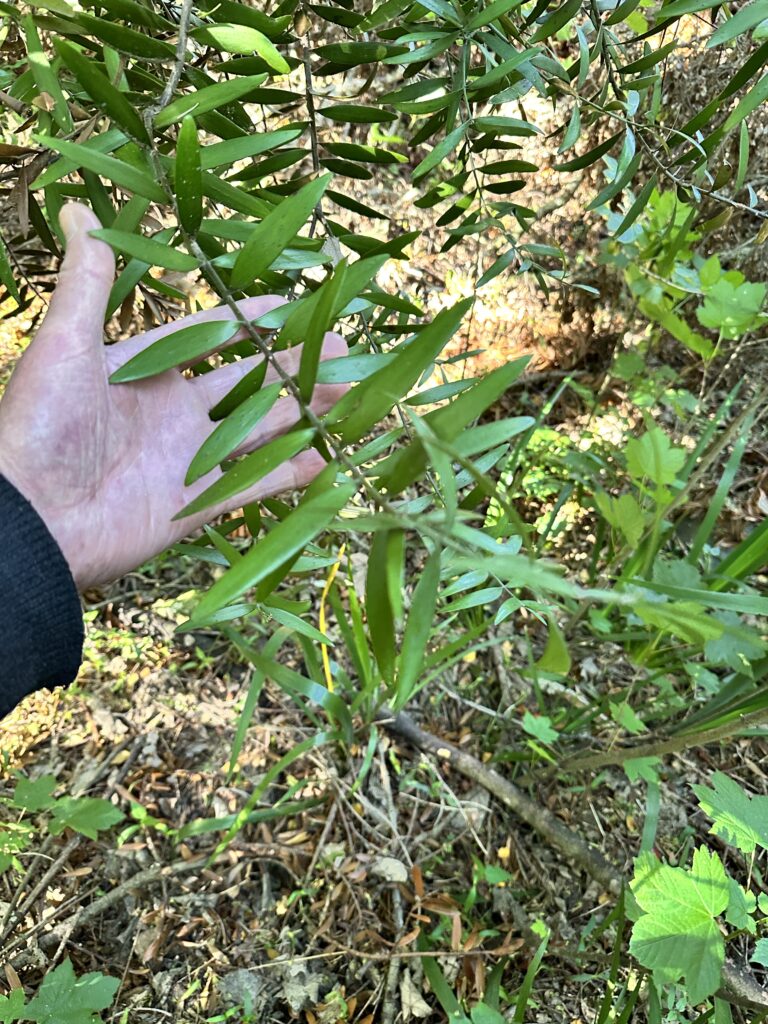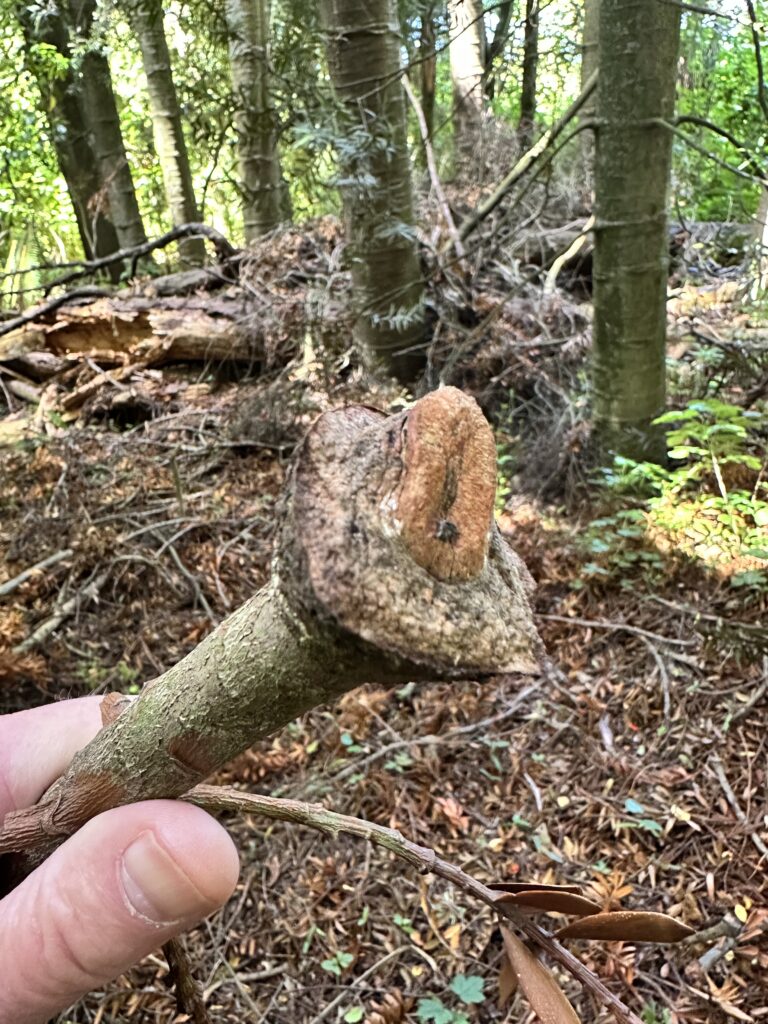Wairongoa Springs Kauri Stand
When I first contacted Greg Steward from Scion Research about my tentative plans to plant a Kauri forest, he told me of a small stand of Kauri in Taieri North that he had visited in 2014 to conduct a tree growth measurement study. With the nurse tree planting completed and the gorse cut by October 2024, I had some time to search out this stand.
History
The land was owned by Alexander Thomson, who bottled the naturally carbonated spring water from the property and sold it in Dunedin as soft drinks. When his son, Mr A.C.B. Thomson returned from World War 1 he established an extensive arboretum on the property, including around 110 juvenile kauri trees planted between 1955 and 1957. The younger Mr Thompson was a botanist and horticulturist.
The property has changed hands several times since the 1950s, including being owned by the parents of actor Sam Neill. Sam spend his early teenage years there.

Contemporary Stand
I had a rough idea where the property was located, so I drove to Taieri North early one morning to try to catch the owner at home. After a couple of encounters with his neighbours, I homed in and met Michael Bradfield. I told him what I was doing in Taieri Beach and asked to see his stand of kauri.
Michael is a delightful man. He was friendly and engaging. He took me to the stand (which now numbers about 50 trees), and we walked around discussing the trees, the understory, and the adjacent exotics.
Many of the original trees have grown to form a crown. The base of the trees is not so large, but each stretches skyward with a clean, straight, parallel bole, to the crown above. It’s really impressive. I can see why these trees were so attractive to early settlers, whether for shelter, canoes or sailing ships.

Alongside the older trees, self-seeded younger trees are growing. My understanding is that the original trees were not thinned as they matured, leading to a dense canopy, and not really enough room for the crowns to spread and achieve the balance needed by Kauri. This may be why there has been 50% losses from the original planting.
My forestry plan is to thin my trees around year 25, when they are rickers, and again around year 80 as the crown forms. My density will reduce from 1000 stems/ha to 700, and then to the final stand of 400 trees/ha. A proactive management approach should leave the best and strongest to continue through the next millennium.

Forest Floor
I was interested to see the litter on the ground beneath the trees. Aside from the tap root, kauri grow laterals out from the trunk. Nodules grow up from the laterals to absorb nutrients from the forest floor. These nodules are delicate, which is why raised boardwalks are commonly installed in heavily trafficked forests.
I saw that the leaves had not fallen from tree, but rather whole branches had fallen, with the leaves remaining attached to the branch or twig.
One of the attractions of growing kauri is the low future maintenance demand. The trees shed their lower branches as the grow, eliminating the need to prune. The branch is ejected from the trunk, Showing a cone in the end of the severed branch. The hole in the trunk grows over with no apparent damage.
Who said indigenous trees were more troublesome that exotic pinus radiata?
I returned to this stand in December 2024, together with some friends and my neighbours Dave and Elaine. It remains (in millennials lingo) awesome. I hope to return again in the future.
07 December 2024

